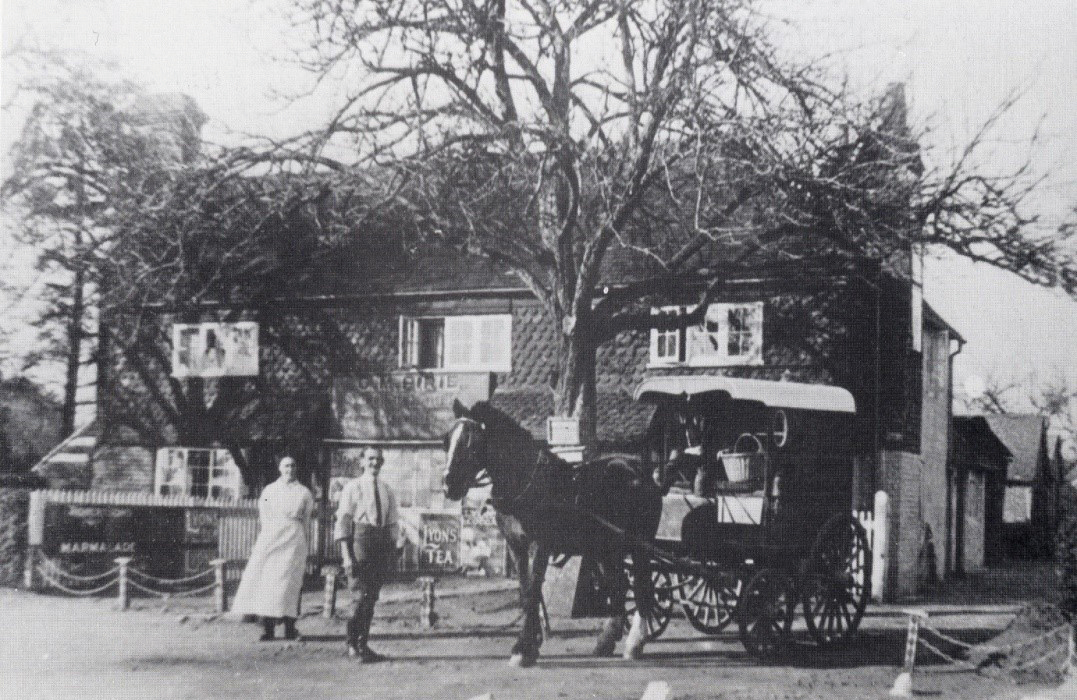
George Pirie’s delivery man is setting off on his round, with his basket to carry loaves from the van to his customers’ houses
Around 1900 bread formed the main item in Cranleigh people’s diet. Many of our farm labourers, brick-makers and builders ate bread at breakfast, a chunk of bread with cheese for their midday meal and then more bread at tea/supper. The term ‘breadwinner’ for the household’s wage-earner was entirely accurate. Few people had bread ovens in their homes, so bread was normally bought from a local baker.
The seventeenth-century house called the Old Bakery on the Common (by the present Guildford roundabout) certainly housed a baker as far back as 1891. He was then Harry Killick, 34, who was assisted by his elder sister Emma. The bakery was well sited, a mere stone’s throw from the windmill, which provided its flour. (The site of the windmill is a circle of low wooden buildings, on the right of the bridge over the Downs Link Path on Elmbridge Road.) Unfortunately, the windmill, which was built around 1800, was falling into disrepair. One of its sails broke in 1882, but the Weller brothers, who bought it that year, installed a gas engine to grind corn. Harry Killick’s father had been the master miller there, and so had his grandfather, who described himself as ‘miller and baker’. Perhaps becoming a baker seemed a logical step for Harry. The windmill was eventually taken down in 1917, but the baker probably continued to buy his flour from Weller’s, who ran a corn shop nearby in the main street.
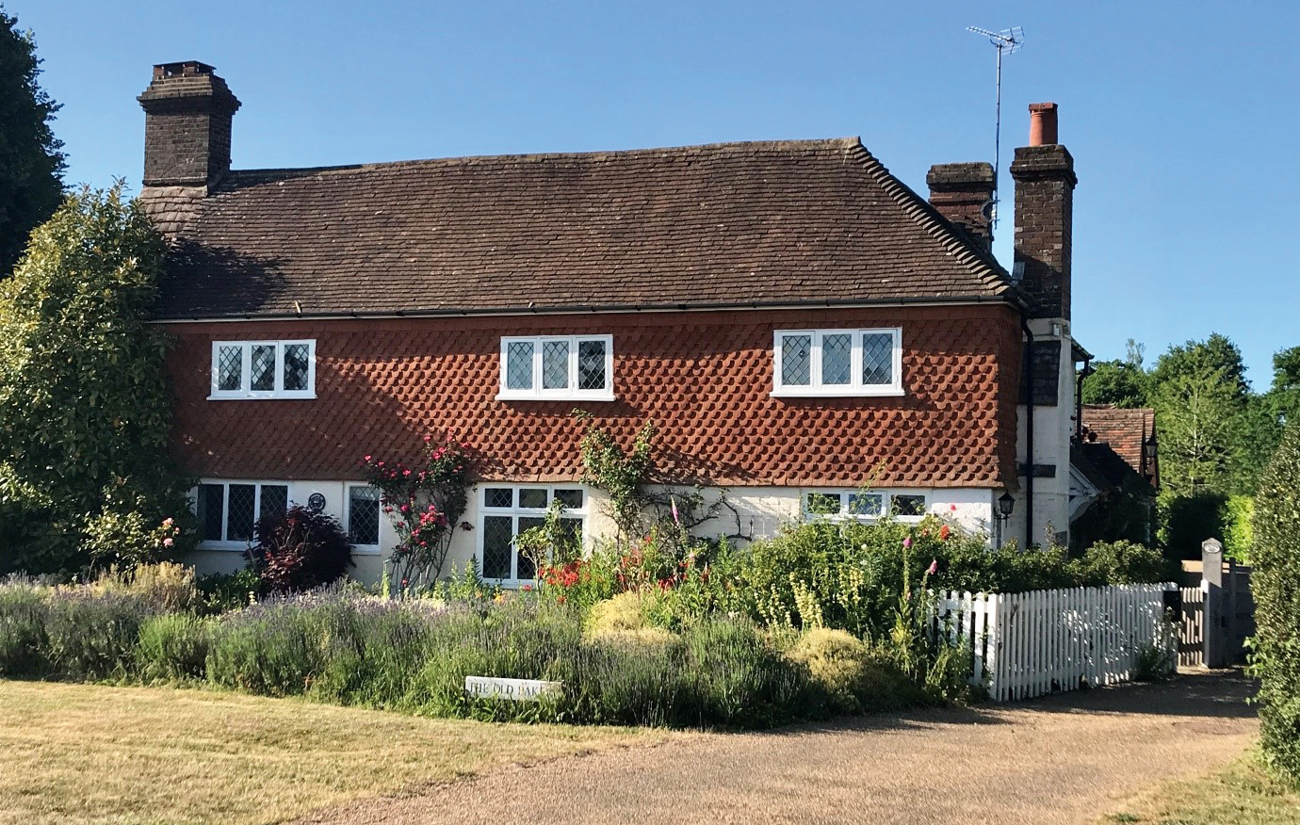
The Old Bakery, 2020 (courtesy of Cath George)
The best bread, and the most nourishing, was made of wheat, but this was also the most expensive, so often bread was made from a mixture of wheat and barley. To make their bread whiter, some bakers mixed their flour with chalk, alum or bone meal. Happily, there is no suggestion that Harry Killick did this!
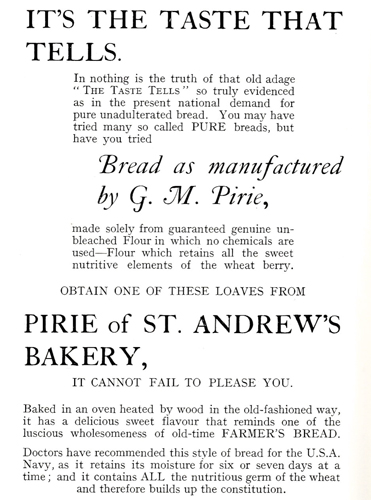
Pirie’s advertisement of 1932
In the 1901 Census, Albert Higgs, 34, was the baker in residence at the Common bakery, and in 1911 George Pirie took it over for the next 35 years. Behind the house were outbuildings where the delivery carts were kept and the horses were stabled. The bread was baked in one of the outbuildings (now called ‘the annexe’), to reduce the danger of fire. The business had become known as St Andrew’s Bakery, after the large church that had been built next door in 1899.
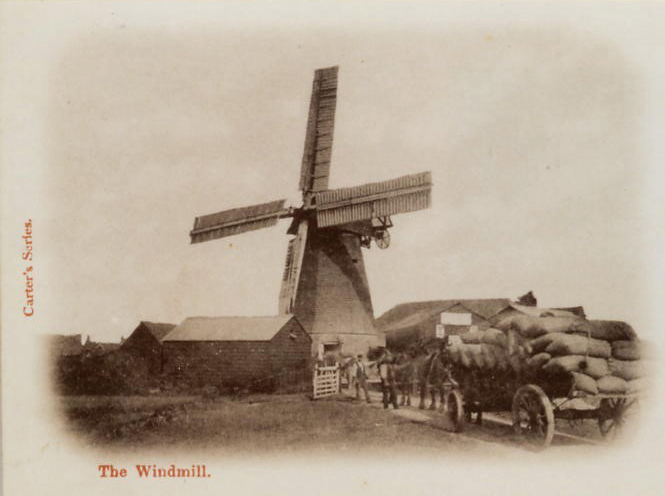
Cranleigh’s windmill in the late 19th century
Besides being a baker, George Pirie was a film projectionist, showing some of the earliest silent movies to be seen in Cranleigh, in a barn near the Railway Hotel (now the Cranley Hotel).
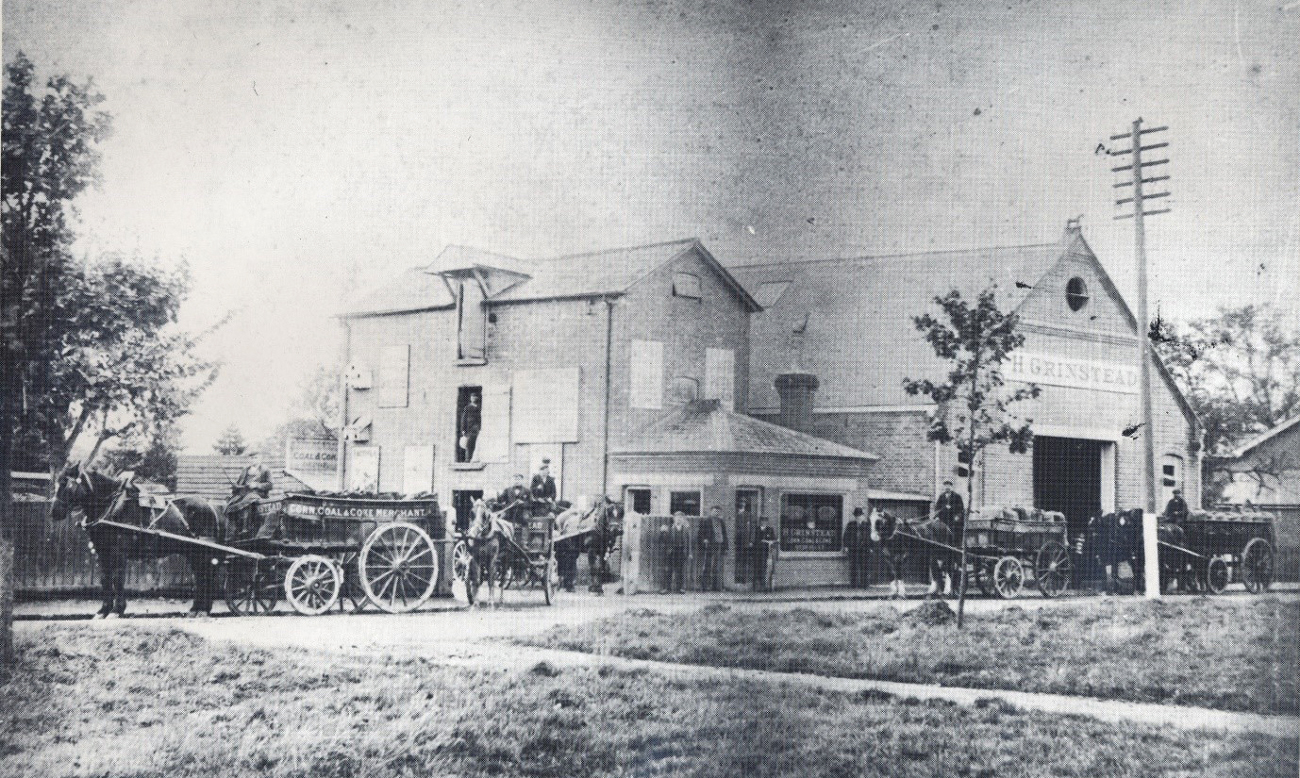
Grinstead’s corn and coal store near the railway station became Weller’s by 1912, and was evidently very busy. The left-hand building has now gone, but the right-hand one is Rania Indian Restaurant. Today, the horse on the gable-top has lost its body and is reduced to three legs!
This was a time when flour was increasingly produced by grinding with mechanical rollers rather than between millstones. Rollers left the wheatgerm whole, so that it could be sifted out and the resultant flour was whiter and more attractive, but less nutritious. It is encouraging to learn from his advertisements that George Pirie produced some stoneground bread both in 1918 and into the 1930s. He also made Hovis bread under franchise.
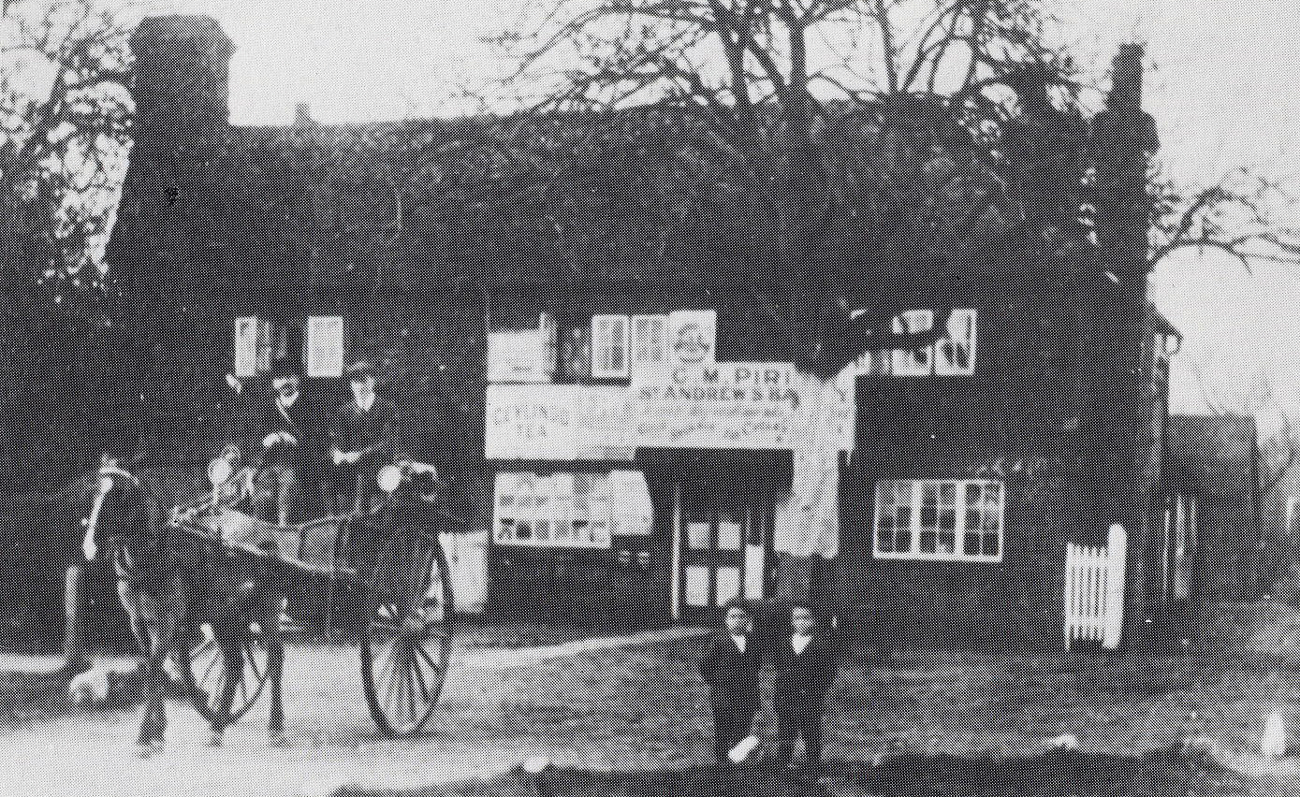
The Pirie twins outside the bakery in about 1915
Tragedy struck the Pirie family in 1923, when Lawrence, one of their fifteen-year-old twin boys, was crushed by a lorry, when he was cycling through the Village on an errand. He had been a trainee baker and a member of St Andrew’s church choir.

St Andrew’s Bakery advertisement, 1918
George Pirie was still in business during the Second World War, when government regulations insisted that bread should be 85% wholemeal and no white bread was allowed. Bread could only be sold when one day old. Although people grumbled, this contributed towards the good health of the nation at the time. After the war people could enjoy their unhealthy white bread again. Sliced and wrapped bread was introduced from the US and became highly popular because of its convenience. Many independent bakeries lost out to groceries and supermarkets, and in 1947 the bakery on the Common was turned into a desirable residence with a stunning garden.
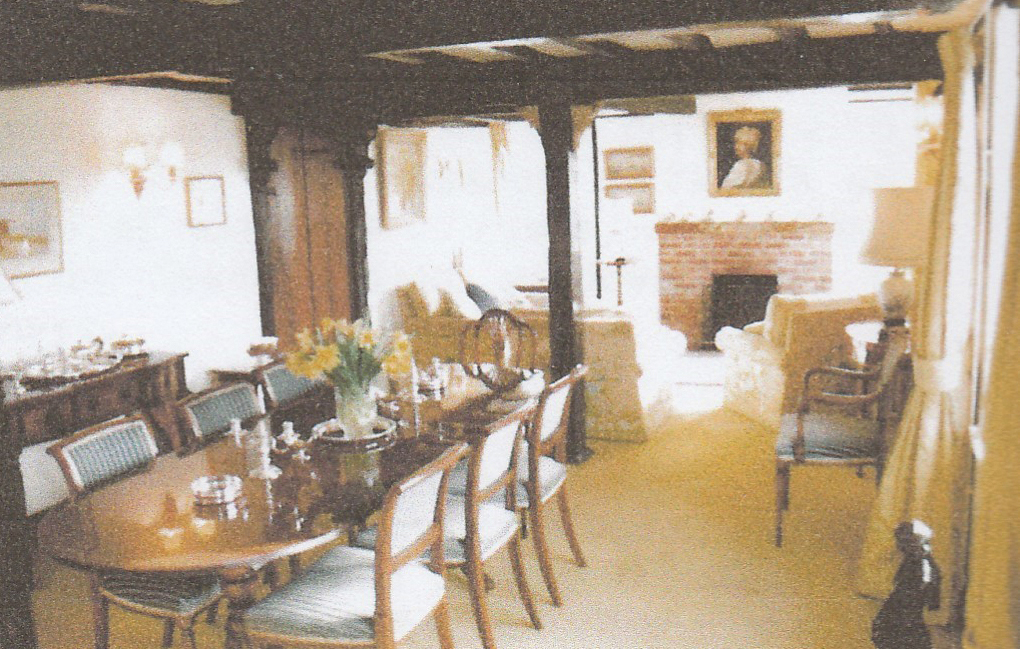
The Old Bakery in 1996 (Brown’s sales particulars, courtesy of Jean Shapland)
(Grateful thanks to Jean Shapland for background information.)
The Cranleigh History Society will resume its monthly meetings as soon the current restrictions are lifted.











